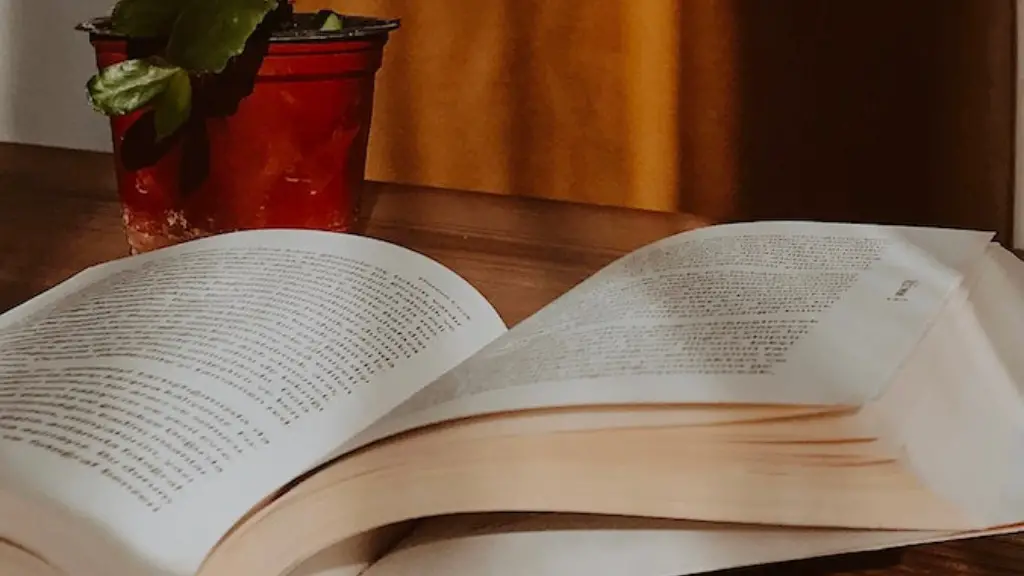Origins of Poetry
Poetry has a long, rich history in humanity. It dates as far back as Sumerian cuneiform scrolls, some of the earliest records of human communities, which are believed to be over 5,000 years old. In fact, these ancient poems captured vivid scenes of everyday life. Many of these ancient poetic scrolls that have survived contain the stories of gods, goddesses, and other mythical creatures, and have been used to help pass down oral traditions through the generations.
In ancient Greece, poetry was an integral part of society. Poetry was used to honor gods, tell stories and make sense of the world around them. Sophocles, an ancient Greek playwright, was credited with inventing the concept of tragedy with his poetic works. Poetry only further evolved through the centuries, adapting to different cultures and languages. During the European Renaissance, poetry was frequently used by famous authors such as William Shakespeare to communicate complex ideas.
Definition of Poetry
Simply put, poetry is the art of expressing ideas, feelings, and experiences through the use of rhythm and language. It is typically written out in lines and stanzas. The rhythm and syllables commonly come from a certain meter or pattern that the poet creates.
The most common form of poetry is rhyme, or the repetition of words or sounds in successive lines, although the use of rhyme is not essential to all poetry. Renditions of poems can be seen in many ways, from quietly reciting a poem to one’s self to beautiful performances of poems with music and movement.
Although it is sometimes thought of as old-fashioned or obscure, poetry plays a big part in the day-to-day life of many people. It can be found in literature, films, songs, and even advertisements.
Types of Poetry
Sonnets, haikus, and limericks are some of the popular forms of poetry. Each type of poetry captures the emotions and thoughts of the poet in a different way.
A sonnet is a traditional fourteen-line poem with a fixed rhyme scheme. It typically expresses a theme or idea with a specific shift in the poem, having a key line called the volta. An example of a sonnet is William Shakespeare’s “Shall I compare thee to a summer’s day.”
Haiku is a Japanese form of poetry consisting of three lines with a total of seventeen syllables. It is typically used to describe a feeling or emotion about nature. A classic example of a haiku is “The old pond/A frog jumps in/The sound of water.”
Limericks are humorous five-line poems often with an unexpected twist at the end. It typically follows an AABBA rhyme scheme and uses irreverent language.
The Power of Words
Poetry is a powerful tool of expression. With the right words, a poet can stimulate emotion and thought in the listener, while a single image or poetic metaphor can be used to tug at the heartstrings of an audience.
The power of words is what makes poetry especially powerful. A well-crafted poem is a beautiful thing that can leave its audience mesmerized and inspired. Poetry can also be used to foster empathy, encourage social change, and to connect people with their own emotions.
Benefits of Poetry
The study of poetry can be beneficial both emotionally and intellectually. Analyzing different types of forms, styles, and meters can help a person grow and develop in their writing and reading skills.
Emotionally, poetry is a great form of self-expression for an individual. It allows one to clearly articulate thoughts and feelings that may be difficult to express in any other way. It can also provide a way of channeling emotions in a safe and cathartic way.
Using Poetry in Education
The use of poetry in education has been growing in recent years. It has been found to be an effective and engaging way of teaching language skills, critical thinking, and creativity. Poetry can help students to make connections to stories and the world, while teaching important tools such as alliteration and practice with simple sentences.
When used creatively, poetry can be a great way to engage a student’s imagination. There are several ways to introduce poetry to students, from writing their own poetry to reading and performing poems. This can allow students to really explore and experience poetry in a creative way, and be encouraged to express themselves.
Using Poetry in Everyday Life
Adding a bit of poetry to one’s everyday life can help to reframe everyday life into something more beautiful and meaningful. It can be a tool for self-reflection and contemplation, helping us to recognize things we may have forgotten or find new ways to look at our lives.
For example, we can practice the ancient Japanese art form of Haiku, which can help us take pause and observe the beauty of everyday moments. We might also borrow poetic elements such as powerful images, metaphors, and symbolism, and use them in our writing as a way to express ideas in a more meaningful way.
Conclusion & Analysis
Poetry is an ancient art form that is timeless. It has inspired and will continue to inspire many generations. It can be used to express emotions, advocate for social change, educate, motivate, and bring joy. Through poetry, we can create connections, explore ideas, and challenge existing views.
At its core, poetry is about living life by expressing ourselves openly and courageously. It is about embracing our flaws, truths, and mending our broken pieces. Poetry is about connecting to our emotional landscape and understanding our place in the world. It is about finding beauty in the everyday and using words as our vehicle of expression.


